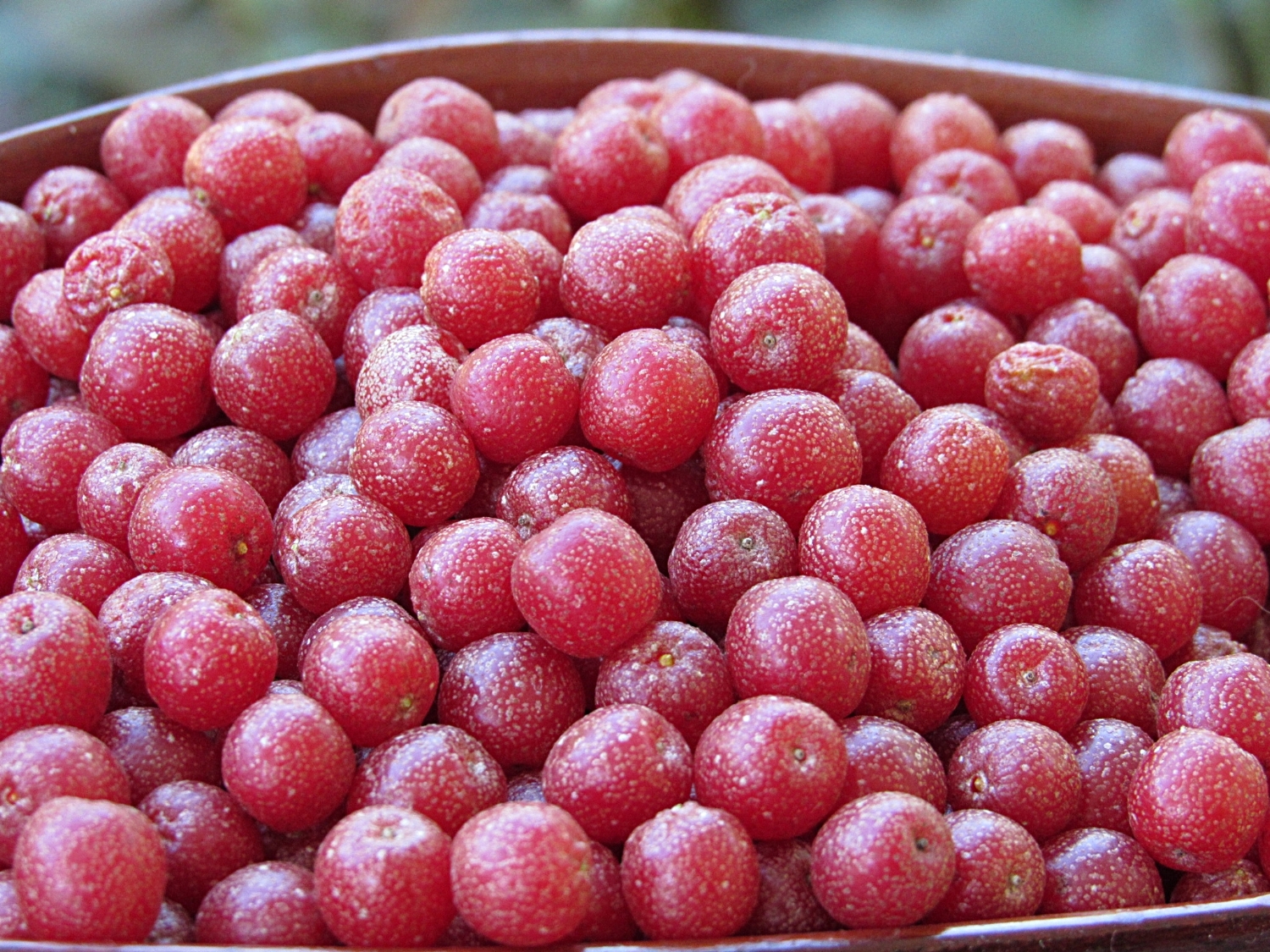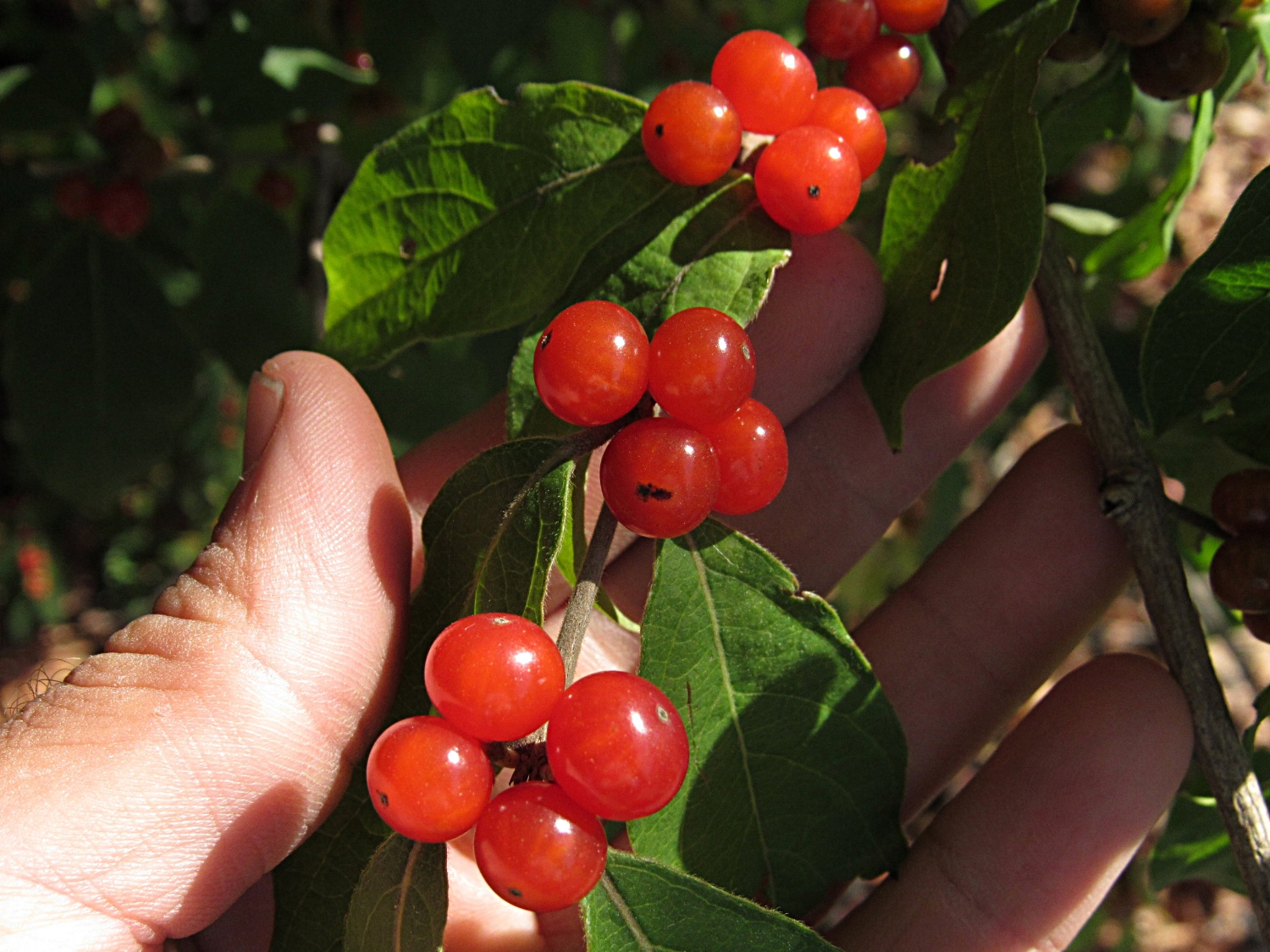The autumn olive, Elaeagnus umbellata, gets a lot of hate. The USDA Forest Service gives detailed recommendations on how to poison the plant with diesel fuel, Vanquish, Arsenal AC, and Garlon 4. Some states list it as a noxious weed, and its ability to increase nitrogen levels in the soil has led to problems for native species that thrive in lower-nitrogen environments.
And at this point, eradication of the plant seems unlikely. The Asian shrub is widespread and naturalized across much of the eastern and central US. Birds and other wildlife enjoy the bright, juicy berries, which means the seeds will continue to spread. This is sort of a shame, because it translates into less habitat for native plums, hawthornes, serviceberries, and hazelnuts, which grow in similar habitats.
But if you can’t beat ‘em, eat ‘em. The autumn olive is a bonafide superberry that is likely growing in a nearby park or meadow, free for the picking, and ready to boost your health with a hefty dose of carotenoids and vitamin A. You might even pick a berry that otherwise would have grown into yet another invasive shrub, so consider eating autumn olives a delicious act of conservation.
Autumn olive is most notable for its high concentration of lycopene. Lycopene is a well-known carotenoid thought to decrease the risk of prostate, lung, and stomach cancers, decrease LDL (bad) cholesterol, and decrease the risk of heart disease. Americans get their lycopene mostly from tomatoes, which contain about 4.6 mg of lycopene per cup. Cooking tomatoes increases the bioavailability of this lycopene, and canned tomato products such as soup and sauce contain even higher amounts - a cup of tomato soup contains about 26 mg.
Although tomatoes contain high levels of lycopene, they simply can’t compete with autumn olives in this regard. 100 grams of raw fruit boast an average of 38 mg of lycopene, and some samples have tested even higher, all the way up to 54 mg! Autumn olives contain other healthy carotenoids too, such as β-carotene, lutein, and phytoene. It’s also a good source of vitamin C, providing 27.8 mg per 100 grams of fresh fruit. Many non-academic articles report that autumn olives contain other vitamins and minerals, but I couldn’t find any sources to back this claim up. It may be conjecture based on the vitamin content of related species.
You can eat the berries fresh, but the taste is a bit acerbic. The ripest berries are sweeter... but "sweeter" is very relative: they're still pretty sour. Thankfully, if you don’t care too much for the raw fruit, autumn olives make delicious jam, jelly, sauce, fruit leather, and wine. The sour and fruity flavor of autumn olives is similar to pomegranates or tart cherries, so recipes that call for either of those fruits might be worth experimenting with.
I recently made a nice grilling sauce with autumn olive puree, honey, habanero, and brown sugar. Pairing autumn olive with grilled meat is a good idea not only because the tangy sweetness blends well with the smoky, rich flavors, but also because the fat in the meat magnifies the benefits of the lycopene. It doesn't have to be meat, but if you want to get the most out of autumn olive’s high lycopene content, eat it alongside some fat to help with absorption.
Finding and harvesting autumn olives is not hard. They like to grow along the borders of forests, in abandoned pastures, and along roads, preferring sunny spots and happily taking root in poor soil. Because autumn olives tend to grow in polluted areas (like roadsides and old mining sites) and because they are often targeted aggressively with herbicides, you want to be sure to harvest from safe sources.
The fruits have distinctive silver speckling which helps set them apart from many other red berries ripening this time of year. The toxic bush honeysuckle is one lookalike to be careful of, but with careful examination you really can’t confuse the two. Autumn olives also have unique silver-bottomed, waxy leaves that help with identification. The whole shrub should not be very tall, at most around 20 feet.
Once you've found a safe source of autumn olives, grab a big basket and start picking. Like for so many other wild edibles, a woven basket is the best choice for harvesting autumn olives. Why? As you'll soon discover, the fruits have a tendency to pull off the branch with the pesky little stems they grew on. A basket allows you to shake around the berries, dislodging the stems that then fall through the gaps in the basket. This method doesn't completely eliminate the stems, but it sure helps. Another way to make sure you don't get stems in your jam is to pluck the berries by rolling them in between your thumb and pointer-finger until they pop free of the branch, not by pulling them. When you roll the berries, they usually roll right off the little stem they grew on, and if they don't, the loosely attached stem gets rolled in your fingers too and falls right off. If you simply pull the berries off, probably 40% bring their annoying stems along for the ride. If you roll them, it seems to be more like 5%.
There is a fringe movement to popularize autumn olive consumption in the States. There is every reason to hope that the fruit - usually called autumn berry, in an effort to sound a bit more appealing - does become more appreciated. The plant is naturally resilient, requires virtually no pesticides or fertilizers, and can thrive in a variety of growing conditions. In fact, autumn olives are known to help replenish depleted soil. This means, in theory, that farming organic autumn olives would require relatively little labor while potentially improving the soil conditions. And foraging for autumn olives takes a good amount of seeds out of "circulation" - they are rendered sterile when cooked. There is a lot of potential benefit for the environment if we would start eating more autumn olives. And let's not forget about all that lycopene, either.
One last thing: don't let toxic bush honeysuckle berries turn you off from foraging for autumn olives. Here's some photos contrasting the two species:
These are bush honeysuckle berries. Note the lack of silver speckling and the translucent skin.
The underside of the bush honeysuckle's leaves are green, not silver like the leaves of autumn olive.
On the left is an autumn olive; at right, a bush honeysuckle berry.
Squish a bush honeysuckle berry, and it oozes off-yellow goo mixed with multiple seeds.
An autumn olive, on the other hand, has red pulp and a single seed.








